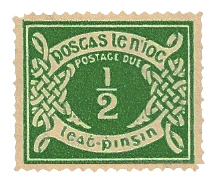One half
One half is a mathematical term representing a fraction that results from dividing one whole into two equal parts. It is denoted as 1/2, 0.5 in decimal form, or 50% in percentage form. The concept of one half is fundamental in mathematics, especially in the fields of arithmetic, algebra, and geometry. It also has applications in various other disciplines, including statistics, economics, and physics.
Definition and Properties[edit | edit source]
One half is defined as the fraction created by dividing the number one by two. It is part of the broader category of rational numbers, which are numbers that can be expressed as the quotient or fraction p/q of two integers, a numerator p and a non-zero denominator q. In the case of one half, the numerator is 1, and the denominator is 2.
Mathematical Representation[edit | edit source]
- Fraction: 1/2
- Decimal: 0.5
- Percentage: 50%
Properties[edit | edit source]
One half has several important properties:
- It is the multiplicative inverse of 2, meaning that 1/2 × 2 = 1.
- Multiplying any number by one half is equivalent to dividing the number by 2.
- It is a unit fraction, which is a fraction where the numerator is 1 and the denominator is a positive integer.
- In a circle, an angle of 180 degrees is equal to one half of the circle's total 360 degrees, illustrating its significance in geometry.
Applications[edit | edit source]
The concept of one half is widely used across various fields:
Mathematics[edit | edit source]
In mathematics, one half is often used in problems involving division, ratios, and proportions. It is also a key concept in understanding the properties of numbers and operations on fractions.
Science[edit | edit source]
In science, particularly in physics, one half plays a crucial role in equations and formulas, such as the calculation of half-life in radioactivity and the principle of half-wave rectification in electronics.
Economics[edit | edit source]
In economics, understanding fractions like one half is essential for financial calculations, such as interest rates, economic growth rates, and market analysis.
Everyday Life[edit | edit source]
One half is encountered frequently in everyday life, from dividing objects or quantities into equal parts to understanding recipes, time, and financial transactions.
Historical Context[edit | edit source]
The concept of fractions, including one half, has been around since ancient times, used by civilizations such as the Egyptians and Babylonians. The representation and understanding of fractions have evolved over centuries, leading to the modern mathematical notation and concepts we use today.
See Also[edit | edit source]
This article is a mathematics-related stub. You can help WikiMD by expanding it!
Search WikiMD
Ad.Tired of being Overweight? Try W8MD's physician weight loss program.
Semaglutide (Ozempic / Wegovy and Tirzepatide (Mounjaro / Zepbound) available.
Advertise on WikiMD
|
WikiMD's Wellness Encyclopedia |
| Let Food Be Thy Medicine Medicine Thy Food - Hippocrates |
Translate this page: - East Asian
中文,
日本,
한국어,
South Asian
हिन्दी,
தமிழ்,
తెలుగు,
Urdu,
ಕನ್ನಡ,
Southeast Asian
Indonesian,
Vietnamese,
Thai,
မြန်မာဘာသာ,
বাংলা
European
español,
Deutsch,
français,
Greek,
português do Brasil,
polski,
română,
русский,
Nederlands,
norsk,
svenska,
suomi,
Italian
Middle Eastern & African
عربى,
Turkish,
Persian,
Hebrew,
Afrikaans,
isiZulu,
Kiswahili,
Other
Bulgarian,
Hungarian,
Czech,
Swedish,
മലയാളം,
मराठी,
ਪੰਜਾਬੀ,
ગુજરાતી,
Portuguese,
Ukrainian
Medical Disclaimer: WikiMD is not a substitute for professional medical advice. The information on WikiMD is provided as an information resource only, may be incorrect, outdated or misleading, and is not to be used or relied on for any diagnostic or treatment purposes. Please consult your health care provider before making any healthcare decisions or for guidance about a specific medical condition. WikiMD expressly disclaims responsibility, and shall have no liability, for any damages, loss, injury, or liability whatsoever suffered as a result of your reliance on the information contained in this site. By visiting this site you agree to the foregoing terms and conditions, which may from time to time be changed or supplemented by WikiMD. If you do not agree to the foregoing terms and conditions, you should not enter or use this site. See full disclaimer.
Credits:Most images are courtesy of Wikimedia commons, and templates, categories Wikipedia, licensed under CC BY SA or similar.
Contributors: Prab R. Tumpati, MD




